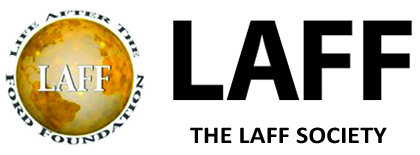CLIPPINGS
|
Donors Should Not Drive Development: Learning from Botswana By Steven W. Lawry
Steven Lawry was Program Officer in Namibia, Representative in Cairo and Director in the Office of Management Services, 1992-2006. This is from The Hauser Center, Humanitarian & Development NGOs Domain blog.
As a young man starting out in international development work in the 1970s, I served as a Peace Corps Volunteer in Botswana. But my only connection to the Peace Corps was a monthly paycheck (a very small one).
I was for all intents and purposes a Botswana government civil servant. I held an established government post, Assistant Planner in the Department of Town and Regional Planning. The Department was a unit of the Ministry of Local Government and Lands. I reported to a Senior Planner, a Swede funded by SIDA. She reported to the Director, who was seconded by UNDP.
He reported to an Undersecretary in the Ministry, who was a Motswana, and so forth. I didn't realize it at the time, but what seemed to be a sensible and effective way of integrating overseas staff into a developing country's public service was quite unusual. I came to learn that, in other countries, apart from a few high-level advisors, donor-funded staff usually worked in separate management units, located in aid missions or in the offices of donor-funded contractors and INGOs.
As I came to work in other countries and under different aid staffing regimes, Botswana's practice of integrating overseas advisors into its civil service structure seemed all the more compelling. It helped ensure that everyone worked to a coherent development strategy, which had been debated up and down the structure (by both Batswana and expatriate staff) and agreed ultimately at the highest levels. overnment programs were backed by donor funds and Botswana government revenues.
Any donor making its funding contingent on activities that fell outside of Botswana's carefully established priorities would be told, as politely as possible, that they take their funds elsewhere. Funding was important, yes.
But more important was ensuring that it was applied in a disciplined and coordinated way to the country's own development strategy. Donors rarely did take their funds elsewhere, as they came quickly to appreciate the advantages of Botswana's approach.
Programs were well-conceived and well-executed. They were scaled to the country's capacity to actually implement them and enjoyed the full endorsement of the government and the commitment of government staff and financial resources. They tended to succeed where similar initiatives, pursued in other countries without the benefit of full government endorsement and engagement, failed.
One obvious lesson of the Botswana model is that operational structure'how donors and donor-supported staff and host governments interact in shaping policies, designing programs and implementing them really matters. I have lived and worked in several other developing countries after my time in Botswana, and kept asking myself and others why the Botswana model of staff integration is so rarely found elsewhere. Explanations offered, or implied, were various. One is the nationalist argument: having donor staff so deeply entrenched in national governing institutions would be an affront to national sovereignty. Moreover, expatriates would be holding positions that should be held by citizens.
Many political leaders embrace the nationalist argument, or feel popular pressure to embrace it. Botswana's greatest proponent of its integrated staffing model was the President, Seretse Khama. Khama was a person of considerable wisdom and self-confidence, and if there were pressures to eschew this approach, he would have tamped them down with reasoned arguments on behalf of its many benefits. Importantly, the Botswana model was never meant to be a permanent, open-ended arrangement. Accompanying heavy use of expatriate staff was a vigorous national education and training program, including major investment in the University of Botswana and overseas post-graduate training. By the mid-1980s, less than 20 years after Botswana's independence, the civil service was largely localized. Putting the nationalist argument aside, donors have their own reasons for not embracing the model. One is that, despite efforts to appraise initiatives in light of local conditions, most international donors work to a strategic framework produced in Washington, London, Geneva or Paris.
Donor programming has an adaptation problem: to align their work with the needs of a developing country as defined by its internal planning process would require a tolerance for flexibility and compromise that many aid agencies can't negotiate with their home governments.
My time in Botswana pre-dated the rise of INGOs. Since the 1980s, INGOs have come to be major players in international development. As direct implementers of poverty reduction interventions (especially in the fields of health, education, microfinance, reproductive health, and water and sanitation) they loom particularly large.
For many INGOs, public funds (including contracts and grants from USAID) are important sources of funding and have allowed them to expand their funding bases significantly beyond private donations. (In 2009, CARE USA received $240 million in revenue from private sources versus $247 million from USAID. Also in 2009, World Vision received $344 million from USAID, about 28 percent of its total revenue. In 2008, Save the Children received $108 million, or 24 percent of its revenue, from USAID.) INGOs sometimes receive more direct funding from donors than host governments themselves. Before the January 12 earthquake, 80 percent of all donor funds for Haiti were directed through INGOs; 90 percent of US government funding for Haiti went to INGOs.
|
DISCLAIMER: The views expressed in these pages are the views of the authors and do not necessarily reflect the views of the LAFF Society.

